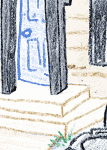|
Common Questions About Squirrel Infestations in Montgomery CountyIn recent years, the rise of squirrels in suburban neighborhoods has caused the news to take notice! Countless articles have been written documenting growing squirrel populations, like this one about a squirrel infestation in Bala Cynwyd. It's no secret that these former forest dwellers are more and more comfortable living among us. While maybe you can tolerate a few extra squirrels in the backyard, what you CAN'T tolerate is a few extra squirrels in the house. Having squirrels nesting in your attic or other places can not only cause structural damage, but can potentially spread illness. Squirrels are known carriers of tick fever, powassan virus, and rabies, and are often infested with ticks, fleas, chiggers, and mites. These are not things you want living under your roof. If you're concerned you may have a squirrel infestation, the first thing you should do is call a qualified wildlife removal expert like AAA Pest & Wildlife! We'll humanely remove the animals from your home and perform exclusion services to keep them from coming back. If you're not sure if you have an infestation, or you just want some questions answered, here is a list of answers to some of the most common questions we receive about squirrel infestations: What parts of the home are most susceptible?Under the shed, porch, and deck are common places. So are crawlspaces and woodpiles, as well as your foundation itself, in which squirrels can actually burrow holes. They also nest in chimneys, roofing vents, and soffit areas. How did the squirrel get inside my attic, crawlspace, or wall?A squirrel needs a hole the size of its head to squeeze its way in, so that means an opening of just a few inches in fireplaces, chimney flues, loose siding, roof vents, and soffit gaps are big enough. Don't forget: They're willing to gnaw their way in, so an opening of any size is a risk. Why should I get rid of a squirrel infestation?Squirrels really can cause thousands of dollars worth of structural damage. The holes they widen to enter the home can cause leaks, they can chew through electrical wiring and ductwork, and they may create entryways for other animals like raccoons, bats, bees, and insects. Keep in mind, furthermore, that squirrels will leave about 20 droppings in your home per day. Eventually, the odor will make its way to your living space. Can I trap or kill a squirrel myself?It makes sense to want to take care of this problem on your own, but there are serious reasons you should leave it to the experts. Shooting a squirrel inside your home is not only dangerous, but potentially messy and damaging. Also, you may kill the squirrel but miss its nest, which could contain baby squirrels. These will die without their mother, and the carcasses will take up to two years to completely decompose and longer for the smell to go away. More questions? Give us a call! We pick up at (215) 796-5177, or you can contact us here! Want more wildlife facts and info? Follow us on Facebook! 
|
|||||||||||||||||||||||||||||||||||||||||||||||||||||||||||||||||||

























